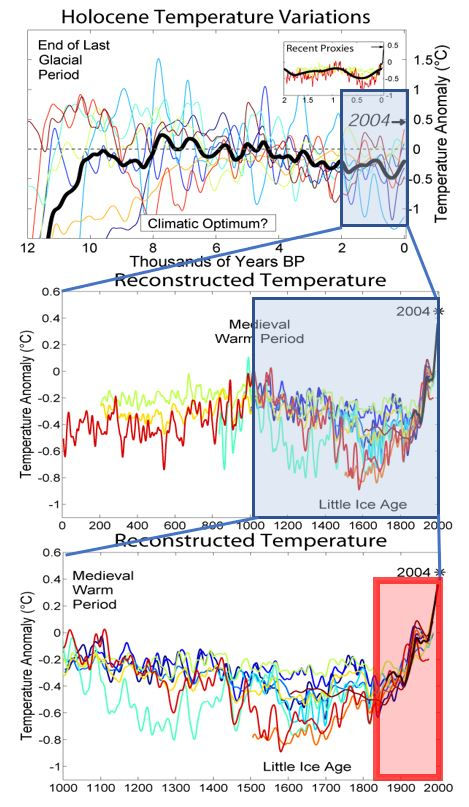Climate change, the new religion
- David Ogier
- Sep 18, 2020
- 4 min read
Updated: Sep 30, 2020
Climate change debates have exited the scientific literature and moved to social media where uninformed opinion holds the same credibility as peer-reviewed research
“Whatever the weather, it's not being caused by global warming. If anything, the climate may be starting into a cooling period.” - Art V. Douglas, former Chair of the Atmospheric Sciences Department at Creighton University
“The Kyoto theorists have put the cart before the horse. It is global warming that triggers higher levels of carbon dioxide in the atmosphere, not the other way round.” - Andrei Kapitsa, a Russian geographer and Antarctic ice core researcher
"I consider the part of the IPCC report, which I can really judge as an expert, i.e. the reconstruction of the paleoclimate, wrong...The earth will not die." - Augusto Mangini, paleoclimate expert, University of Heidelberg
“I am a sceptic…Global warming has become a new religion.” -Nobel Prize Winner For Physics, Ivar Giaever
“The only people who would be hurt by abandoning the Kyoto Protocol would be several thousand people who make a living attending conferences on global warming.” - Kirill Kondratyev, scientist, Russian Academy of Sciences

But this has happened before, right…? Yes... well… not really...
It must be acknowledged that there are natural cycles that will change the climate over time. However, the long term impacts and earths capacity for system reversibility of natural vs anthropogenic climate changes vary significantly. The rate of climate change is the important thing to consider as current rate inhibits adaptation potential.
Short term natural variations (~1 – 30 years)
Seasons, Meteorological variation, Solar activity, Volcanoes, ENSO - El Niño–Southern Oscillation. Short term variations don’t change the climatic baseline but will alter the experienced weather for a few to 10s of years. For example, the current El Niño (return period of 3 - 7 years) is matched by a La Nina event in between which has the opposite effects, i.e. where there is less rain in El Niño, there is likely to be more rain in La Nina.
Short term natural changes include the land surface change such as natural desertification or vegetation migration. This will have a variable time frame of change but can be as quick as a few years in extreme scenarios, these changes impact surface reflectivity and moisture uptake in plants. Solar activity changes in the order of approximately 11 year time scale impacting the amount of incoming solar radiation. Other events include earthquakes, ice melt events, and volcanoes which can very quickly alter the land surface vegetation, albedo and atmospheric composition resulting in rapid but often short-lived climate changes.

Medium-term natural variations (~50 – 1000 years)
Effects of the thermohaline circulation (THC), Large scale ice melt, Land surface change. The medium-term effects often have a short trigger to get them started but then have a medium to long term affect. These are most severe in the northern hemisphere but have global impacts. These impacts will alter the climatic baseline for several hundred years.
Long term natural variations (~1 000 – 200 000 years)
Carbon cycling, Magnetic field changes, Changes in THC itself, Eccentricity (125,000 years), Axial tilt (41,000 years), Axial precession (26,000 years).
Long term natural changes include cosmic influences such as Magnetic field changes (averaging 450 000 years, impacting UV filtering) and the Milankovitch cycles; Eccentricity, Axial tilt and Axial precession. These changes act on the order of 125 000, 41 000 and 26 000 years respectively and will alter the ice age onset and retreat. Terrestrial influences include carbon cycling which changes on the order of seconds to minutes (photosynthesis), in terms of years, decades and centuries (decay and release of organics), and thousands to millions of years (formation of natural gas, oil and coal), which impacts atmospheric CO2 presence and subsequently the global greenhouse effect. Changes in the Oceanic thermohaline circulation occurs in the order of thousands of years and normally require a triggering event to have any lasting consequence such as alterations to ocean global heat transport.
The long-term variations are in effect the earth systems regulating itself finding a balanced equilibrium. These effects have a generally slow onset though the effects may be substantial and have a very long duration. These impacts will alter the climatic baseline for millennia.
Natural climate change processes are unavoidable but the most significant climate drivers act over extremely long-time frames (several thousand years or more). The changes are also cyclical and therefore the impacts oscillate about the mean climate over time and do not depict irreversible trends long term.
Anthropogenic climate change (introduction of fossil fuels to the atmosphere and land surface changes) is the altering of the climate system at a rate and with a persistence that is not observed in the natural system. T
his climate change presents long term trends with no oscillation (return to the normal state over time). The impacts of anthropogenic climate change are altering ecosystems and sensitive environments beyond the normal thresholds and transforming areas into an irreversible state. This climate analysis and strategy focuses on anthropogenic climate changes. Habitat loss and the rate at which the climate has already changed and is projected to change further exceeds the adaptive rate threshold of ecosystems and species and are being pushed to their survivability limits, and in some cases beyond, bringing us to the brink of the 6th mass extinction.

Comments